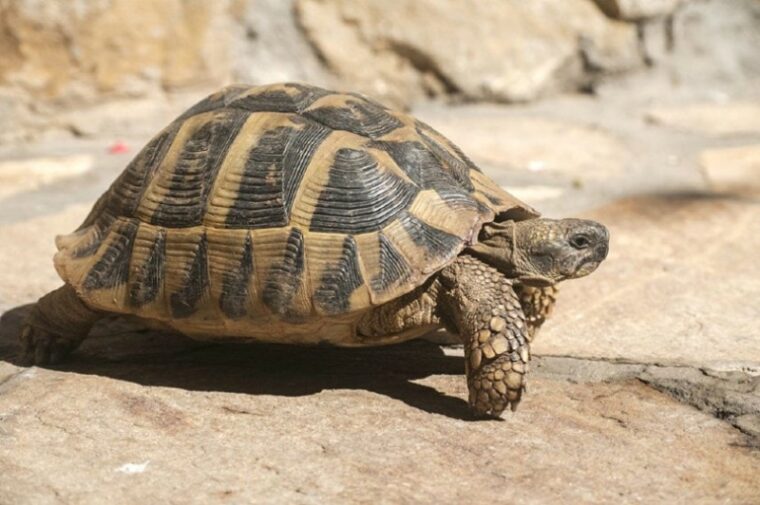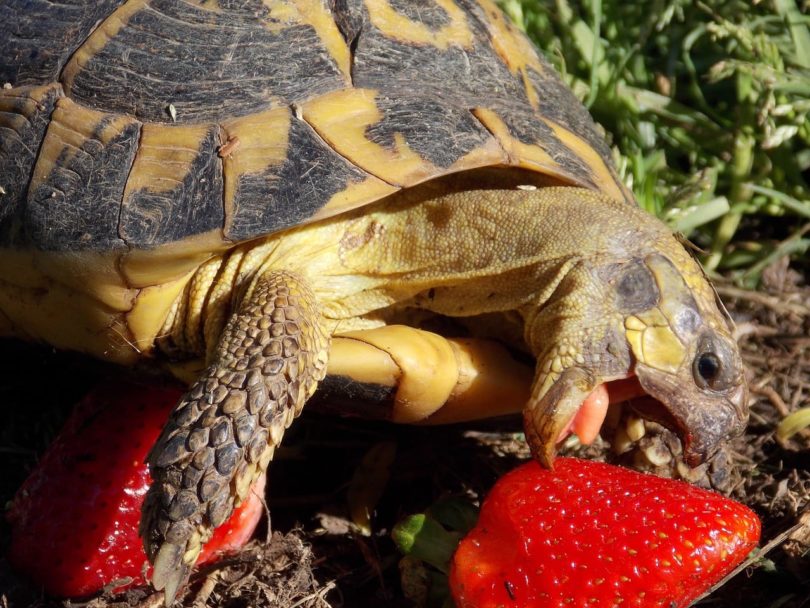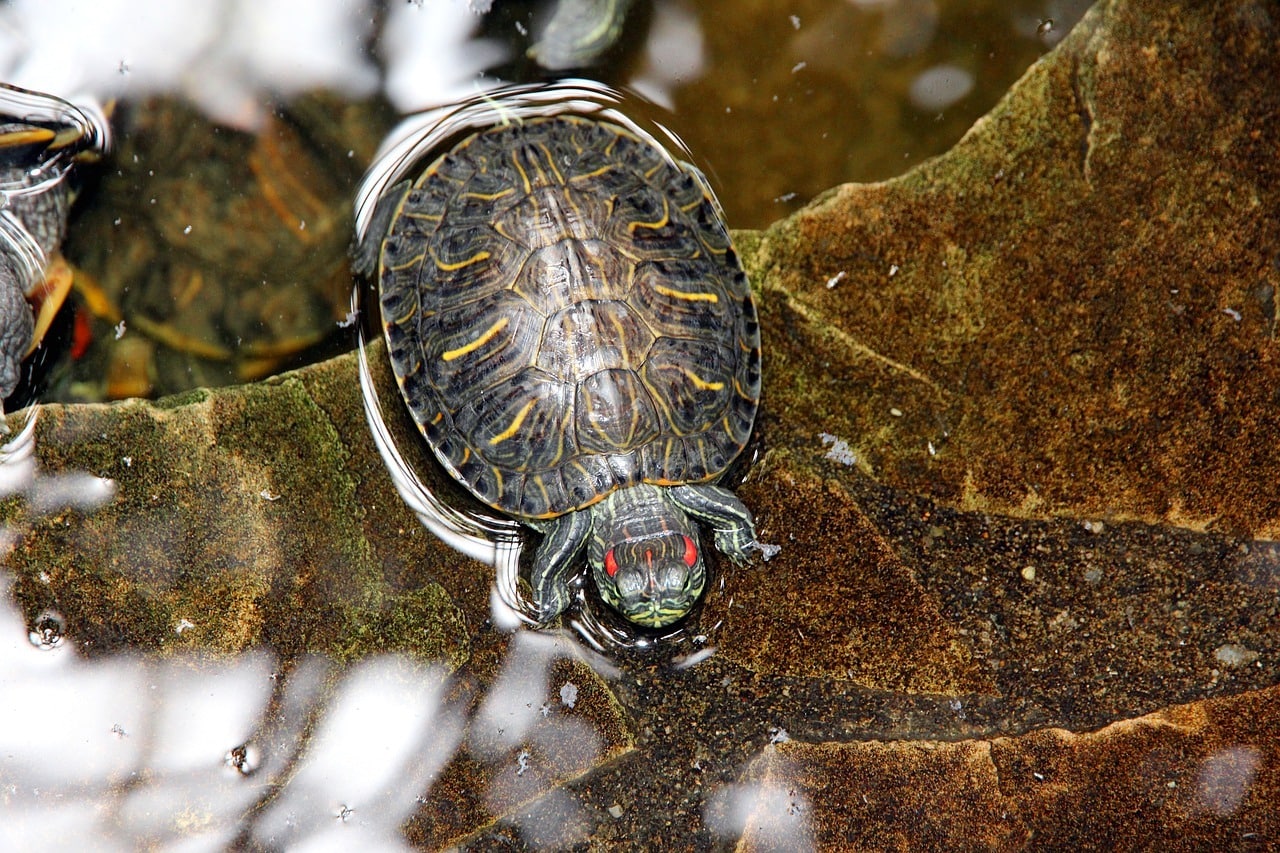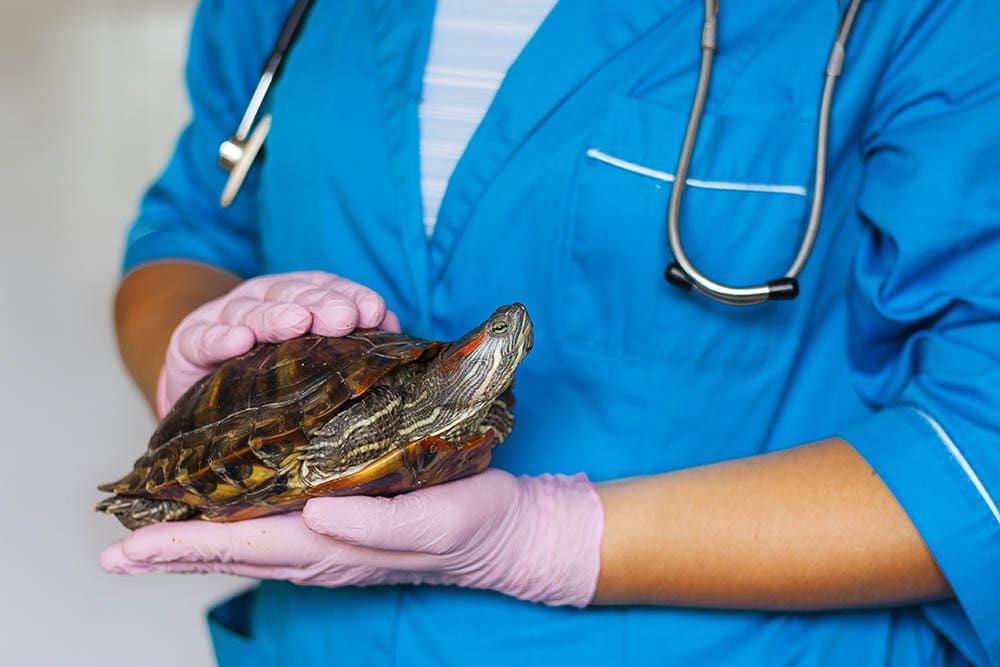
Unlike most pets, tortoises do not necessarily need to eat every day, and in the wild, can go for weeks, even months, without eating! We need to provide our pet tortoises with a healthy balanced diet, but you may be wondering how long they can be left without food. However, our vet experts recommend that a pet tortoise should not go more than 2-3 days. Let’s explore more in the following article.
Their slow metabolic rate means that tortoises can survive long periods without food, but that doesn’t necessarily mean that it is normal for them to stop eating, or that we can go away and leave them without food. Let’s delve a bit deeper into the feeding habits of tortoises and learn what we should be feeding them, how often, and how long they can go without food.
Typical Tortoise Diet and Eating Habits
The majority of tortoises are strictly herbivorous and only eat plant-based food. In captivity, it is important to provide tortoises with a variety of foods that reflect what they would eat in the wild, so they should be given the opportunity to feed on plants whenever possible. Allowing them access to the garden, or including living plants in their enclosure is a great way to provide food and enrichment at the same time. You must ensure the plants are safe for tortoises, and fortunately, there is a very long list of these. A few examples are:
For variation, you can also feed your tortoise leafy greens such as kale, mustard and turnip leaves, and collard greens. Mediterranean or arid zone tortoises, such as the Sulcata, Leopard, Hermann or Horsefield tortoises should also be fed hay like Timothy grass.
For tropical tortoise species, like the red and yellow footed tortoises, other veggies such as zucchini and green beans are also good. You can occasionally feed your tortoise fruits such as papaya, mango, cantaloupe, apple, and watermelon for treats, but be sure to always remove seeds and rinds.
So now we know what your tortoise should be eating, what about how often they should be eating? And for how long can they go without food?

How Long Can A Tortoise Survive Without Food?
Young tortoises need to be fed daily to keep up with growth and development, but for adults, feeding frequency can be every 2-3 days. This is due to their very slow metabolic rates. You can feed adult tortoises every day, but you might find yourself cleaning up a lot of leftovers, or worse, with an overweight reptile on your hands. In the wild, it is not uncommon for a tortoise to go without food for weeks, sometimes months, in periods of drought or cold. In these circumstances, they will slow their metabolism even further to minimize their energy needs, and use fat stores under their shell to provide energy and water.
What About Pet Tortoises?
We certainly wouldn’t advise that you take advantage of this survival adaptation to book a round-the-world trip without a second thought for your reptile friend, but it does mean that, with a bit of planning, you can safely disappear for a week or two without your tortoise starving in your absence. Remember that your pet tortoise is limited by their enclosure, so if you are planning a little getaway, here are some tips to keep your tortoise pal safe without having to hire a live-in pet sitter.

My Tortoise Hasn’t Eaten for Several Days – Should I Be Worried?
Pet tortoises that are accustomed to regular feeds may occasionally stop eating for brief periods with no cause for concern. This could be due to shedding, colder temperatures, or just not needing as much energy. However, if your tortoise abruptly stops eating, and seems unwell (dull or watery eyes, noisy breathing, not moving much) then it is time to visit the vet. There are a number of reasons your tortoise may stop eating, such as gastrointestinal illness like constipation or inflammation, respiratory infections, boredom or depression, or nutrient deficiencies. When fed the incorrect balance of nutrients, tortoises can suffer from a potentially fatal condition known as Metabolic Bone Disease. This can result from a lack of UVB light, low dietary calcium, or by feeding foods that have a high phosphorus content.
The most common health problems in pet tortoises arise as a result of poor nutrition or incorrect habitats, so it is vital that you research their requirements before bringing one home.

Final Thoughts
Their extremely slow metabolic rates mean that tortoises are able to survive for periods of months without food when needed, but this isn’t something that should be exploited in our pets. It does, however, mean that we can leave them for a few weeks with some fairly basic provisions in place; not something we can do with our cat or dog! It is not unusual for pet tortoises to stop eating for several days at a time, but if this is very out of character, or if there are other signs of illness, a lack of appetite can be a very worrying sign.
By providing your tortoise with an enriching environment with the right temperature and light levels, a well-balanced diet that meets their nutritional needs, and variety to reduce boredom, you may never need to take them to the vet. They might not even mind if you leave them behind when you go on vacation, as long as you have everything prepared and someone to look in on them every few days.
- Next on your reading list: What Vegetables Can Tortoises Eat? 16 Vet-Approved Foods
Featured Image Credit: Alexander Varbenov, Shutterstock









